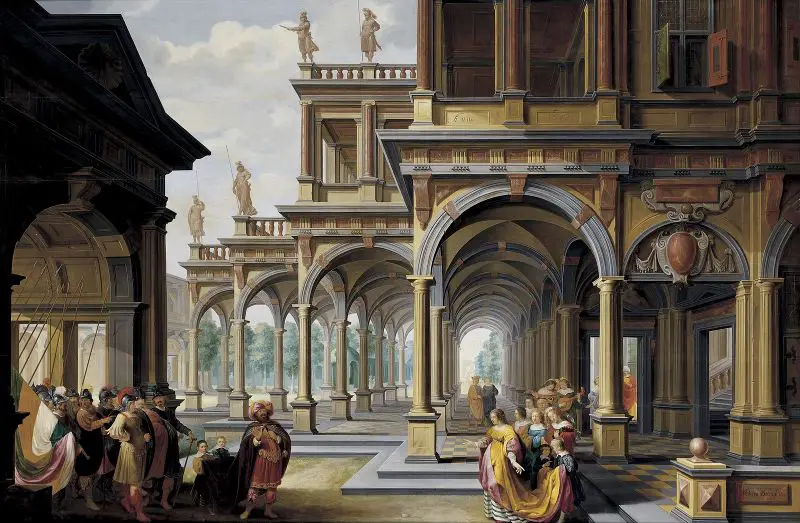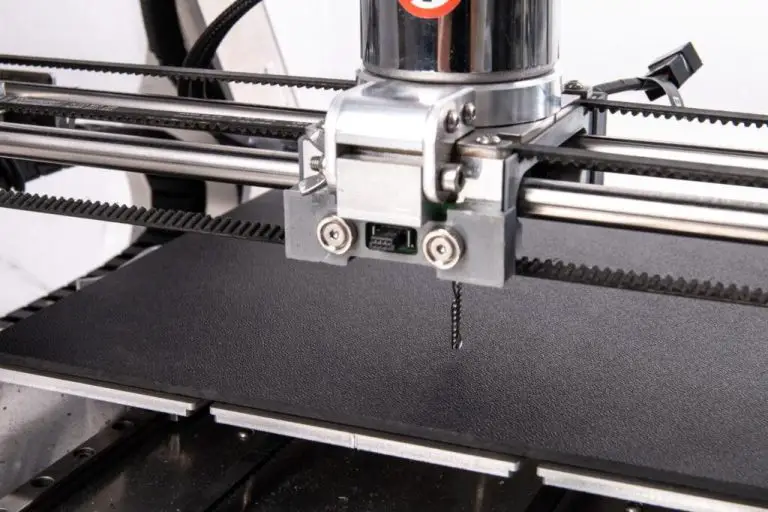What Is Perspective For Short?
Definition of Perspective
Perspective in art refers to the illusion of depth on a 2D surface. It is a technique used by artists to depict three-dimensional scenes on a flat surface. Perspective allows the artist to show objects receding into the distance, overlapping each other, and scaled according to their distance from the viewer.
Perspective was first formalized in Florence, Italy during the early Renaissance. It brings realism and a sense of depth to drawings, paintings, and other media. Various techniques like foreshortening, diminishing scale, and overlapping forms are used to convey perspective. Atmospheric perspective is also used by darkening and blurring distant objects to further simulate depth.
Some perspective types include one-point linear perspective, two-point perspective, and multi-point perspective. Specific guidelines are followed to create the illusion of three dimensions. Success in perspective depends on the artist’s proper use of the horizon line, vanishing points, and observation of angles.
Overall, perspective is an essential artistic device for simulating space and distance on a flat canvas or piece of paper. It revolutionized art in the Renaissance and remains a fundamental technique in drawing and painting today. Mastering perspective allows artists to create realistic and engaging illusions of depth in their work.
History of Perspective
Linear perspective was developed during the Renaissance period in 15th century Italy as a method for creating the illusion of depth and three-dimensionality on a two-dimensional surface. Some key figures and developments in the history of perspective include:
– Filippo Brunelleschi (1377-1446) is considered one of the pioneers of linear perspective. Around 1413-1425, he painted a series of panels demonstrating his experiments with linear perspective, including the first artwork depicting a vanishing point.
– Masaccio (1401-1428) was one of the first artists to employ Brunelleschi’s discoveries on perspective in artwork, demonstrated in his fresco The Trinity in the Santa Maria Novella church in Florence. This artwork used a single-point linear perspective with a vanishing point.
– Leon Battista Alberti (1404-1472) wrote the first explanation of linear perspective in his treatise On Painting in 1435, solidifying Brunelleschi’s perspective system into a formula that could be taught. Alberti helped popularize the use of perspective among Renaissance artists.
– Piero della Francesca (c.1415-1492) created some of the most rigorous, geometrically precise perspectival compositions, like The Flagellation of Christ (1455–1460). His treatise On Perspective in Painting further spread knowledge of mathematical perspective.
So in summary, linear perspective fundamentally transformed painting during the Renaissance, allowing artists to convincingly portray three-dimensional space on a two-dimensional surface.
Types of Perspective
There are several main types of perspective that are commonly used in art and visual media:
One-Point Perspective
One-point perspective is when there is one vanishing point on the horizon line. All the lines converge towards this single point, creating the illusion of depth and distance. This type of perspective gives the impression of buildings or objects receding into the distance. One-point perspective is frequently used for roads, halls, buildings, and tunnels. It’s a fundamental technique for beginners to master.
According to 21 Draw, one-point perspective is often the first technique an artist learns when studying perspective.
Two-Point Perspective
Two-point perspective uses two vanishing points on the horizon line. This creates a more dynamic and exaggerated sense of depth. Parallel lines will converge towards one of the two vanishing points. Two-point perspective allows more versatility and realism than one-point perspective. It can show objects from the top, side, or bottom view.
As Trembeling Art explains, two-point perspective is commonly used for buildings, boxes, roads, and interiors.
Three-Point Perspective
Three-point perspective uses three vanishing points – one to the left, one to the right, and one in the center or foreground. This perspective allows an object to be viewed from above, below, and the front all at once. It creates a dramatic bird’s eye view effect. Three-point perspective is more complex but can capture a full range of angles and heights.
This advanced perspective technique is powerful for conveying steep angles and height in architectural drawings or compositions with extreme viewpoints.
Using Perspective
Perspective relies on a few key concepts that artists use to create the illusion of depth on a 2D surface. The most important of these are:
Horizon Line
The horizon line represents the viewer’s eye level and is often drawn across the composition. Objects above the horizon line are seen from below, while those below are seen from above. The horizon line helps indicate distance.
Vanishing Points
Vanishing points represent the points at which receding parallel lines appear to converge in the distance. Perspective drawing uses 1-point, 2-point, or 3-point perspective, referring to the number of vanishing points on the horizon line.
Orthogonals
Orthogonals are diagonal lines that recede into the distance towards vanishing points. They help create depth and perspective.
By understanding these core concepts, artists can construct perspectival space and depict 3D scenes on a 2D surface. The horizon line provides orientation, vanishing points provide recession, and orthogonals tie the composition together to create an illusion of depth.
Perspective and Composition
Perspective is a powerful tool for drawing the viewer’s eye into an image. Artists utilize perspective to create depth, dimension, and focus in their compositions. According to experts at FasterCapital (https://fastercapital.com/content/Perspective–Perspective-Play–Shadows-as-Visual-Anchors.html), perspective acts as a visual anchor, guiding the eye through the image.
Linear perspective uses vanishing points on the horizon line to create the illusion of depth. Objects appear smaller and closer together as they recede into the distance. This convergence draws the viewer’s gaze deep into the image. Aerial or atmospheric perspective uses color, contrast, and detail to make distant objects seem hazy and diffused. This creates a sense of space receding into the far distance.

Strong perspective lines act as leading lines, directing attention exactly where the artist intends. Curving perspective can swoop the eye through a dynamic composition. Perspective also emphasizes key subjects by making them larger and more detailed in the foreground. With thoughtful use of perspective, artists can choreograph a visual journey through their image.
Perspective Distortion
Perspective distortion is a common occurrence in photography, especially when using wide-angle lenses. It results from being positioned close to the subject, which causes pronounced visual distortion of the scene. Lines that are parallel in real life will converge, straight lines will curve, and objects at the edges of the frame will seem exaggeratedly large compared to those in the center.
As explained by Graeme Cameron, wide angle distortion happens frequently in images shot from close up using a wide angle lens. The wider the angle lens, the more pronounced the distortion will become. This effect is most noticeable with objects in the foreground, which can take on dramatic proportions compared to the background.
FilmLifestyle notes that while this distortion may seem like a defect, it can be used creatively for unique compositions. Photographers leverage perspective distortion to emphasize subjects, lead the viewer’s eye, or evoke a sense of dynamism in the frame. It allows new visual possibilities that a normal perspective could not achieve.
Perspective in Drawing
Perspective plays a key role in creating the illusion of depth and realism in drawings. There are various techniques artists use to achieve perspective in their drawings.
One of the most important techniques is foreshortening. This involves distorting aspects of an object or figure to create the illusion that parts are closer to the viewer. For example, when drawing a human arm pointing towards the viewer, the hand will appear larger while the upper arm appears shorter. This simulates how objects appear smaller the farther they are from the viewer’s eye.
Another technique is diminishing scale, where more distant objects are drawn smaller. In an interior scene with people, the figures in the foreground would be drawn larger than the figures in the background to create perspective. Overlapping objects is another way artists show depth, with nearer objects obscuring parts of objects that are farther away.
Linear perspective uses vanishing points on the horizon line to create the illusion of depth. This allows artists to realistically depict three-dimensional spaces on paper. Atmospheric perspective simulates distance by making more distant objects less detailed, lighter and bluer in color.
Skilled drawing artists are able to apply perspective convincingly, making their drawings appear life-like on a two-dimensional surface. Perspective brings flat drawings to life with the illusion of space and distance.
Perspective in Painting
Painters use perspective to create the illusion of three-dimensional space on a two-dimensional surface. The most common types of perspective used in painting are:
- Linear perspective: Objects appear smaller as their distance from the viewer increases. Parallel lines converge at vanishing points on the horizon line.
- Atmospheric perspective: Distant objects appear less detailed, lighter, and bluer than foreground objects.
- Aerial perspective: Distant objects are less distinct and bluer than foreground objects due to the atmosphere.
Atmospheric perspective creates depth through color. Warm colors advance visually while cool colors recede. Painters use this to push background elements back by using cooler, desaturated blues and grays. The foreground is painted with warmer, more saturated colors. Details also diminish on distant objects. Atmospheric perspective mimics the effect of the atmosphere on how colors and details are perceived at a distance.
Some examples of atmospheric perspective in painting include:
Leonardo da Vinci’s Mona Lisa: The background mountains and bridge are painted with hazy, cooler blues.
Claude Monet’s Impression, Sunrise: The orange sun is contrasted against the cool blues of the background water and sky.
Atmospheric perspective is an essential technique for conveying depth and space in two-dimensional paintings.
Perspective in Film
Camera angles and lenses are two of the most powerful tools filmmakers have to create and convey perspective. The position and angle of the camera, as well as the lens chosen for a particular shot, have a dramatic impact on the viewer’s experience and perception of the story.
A camera positioned at eye-level conveys a sense of neutrality, as if the viewer is observing the scene as a bystander. Angling the camera up gives the subject a powerful, dominant perspective, while angling down diminishes the subject and gives the viewer a broader perspective of the scene. Extreme high or low angles create dynamic visual interest and communicate strong emotions.
Lenses also shape perspective. A wide-angle lens stretches and bends the edges of the frame, creating a distorted perspective. This effect brings the audience closer into the scene, but can also create an unsettling, vertiginous mood. A telephoto lens compresses depth and flattens perspective, pulling backgrounds into closer focus with the foreground. This concentrates the viewer’s attention but reduces immersion.
Directors combine camera placement and lens selection to guide the audience into whatever perspective best serves the story. The audience may be drawn into a character’s shoes or given a cool, distant view of the action. Master filmmakers understand how to harness the camera’s power of perspective.
Sources:
https://eightify.app/summary/film-and-acting/mastering-subjective-perspective-in-filmmaking
https://eightify.app/summary/film-and-acting/techniques-for-creating-objective-and-subjective-perspectives-in-filmmaking
Perspective in Architecture
Architects use perspective drawings to design and visualize buildings and spaces before they are constructed. Architectural perspective allows architects to accurately depict the size, scale, and three-dimensional characteristics of a building or space.
There are a few common types of architectural perspective drawing:
- One-point perspective – Objects recede to a single vanishing point on the horizon line
- Two-point perspective – Objects recede to two vanishing points on the horizon line
- Three-point perspective – Objects recede to three vanishing points, allowing for representation of vertical elements
Architectural renderings generally use two-point perspective, as it allows the most accurate representation of three-dimensional space. Architects may use tools like perspective grids to ensure the accuracy of their perspective drawings.
Precise perspective drawings are crucial for architects to convey the design intent, scale and spatial relationships of a building or space. They allow stakeholders and clients to visualize the finished building before costly construction begins. Perspective is a fundamental architectural drawing technique for realizing design visions.
Sources:
https://www.instructables.com/Architectural-Perspective-Drawing/




